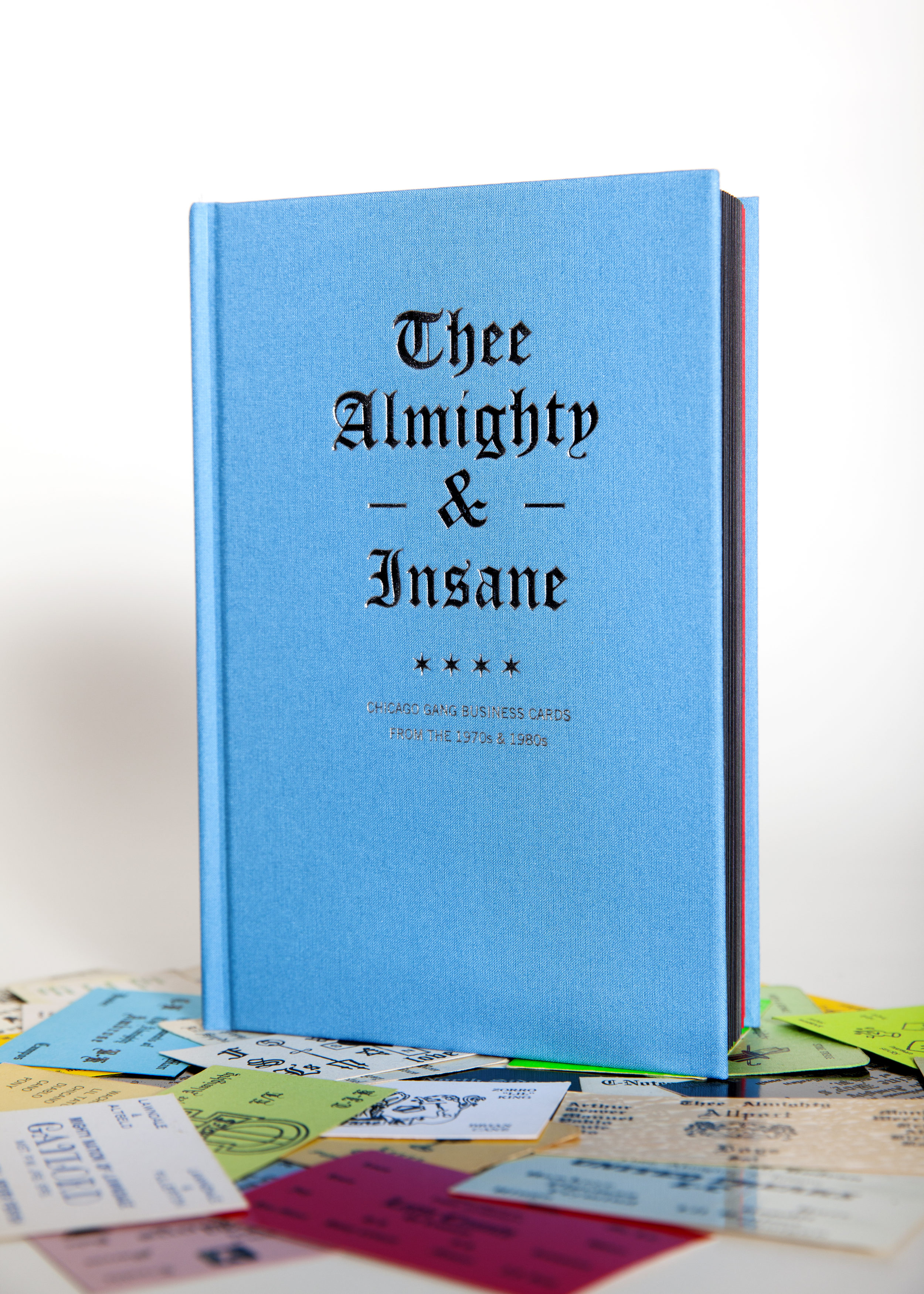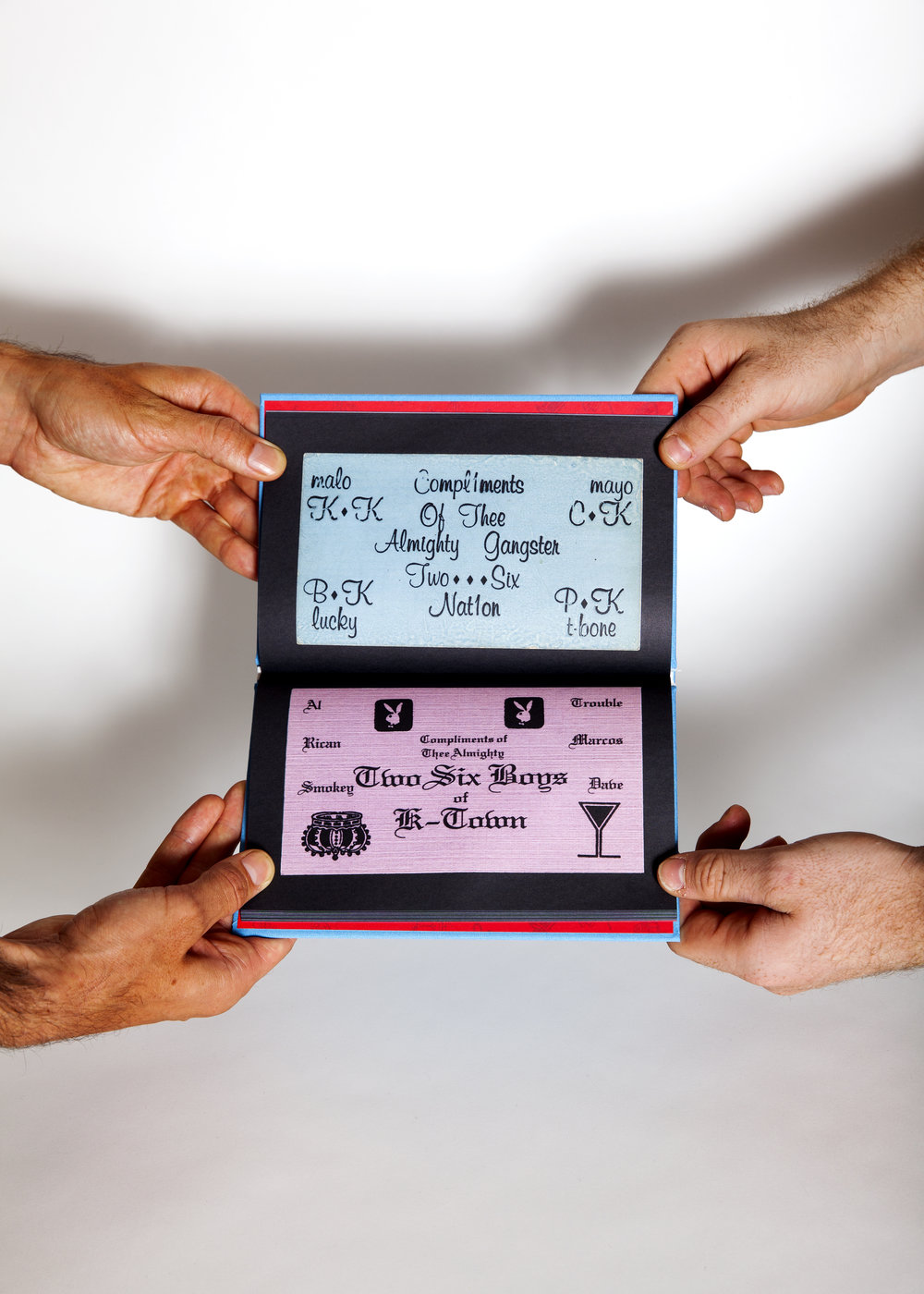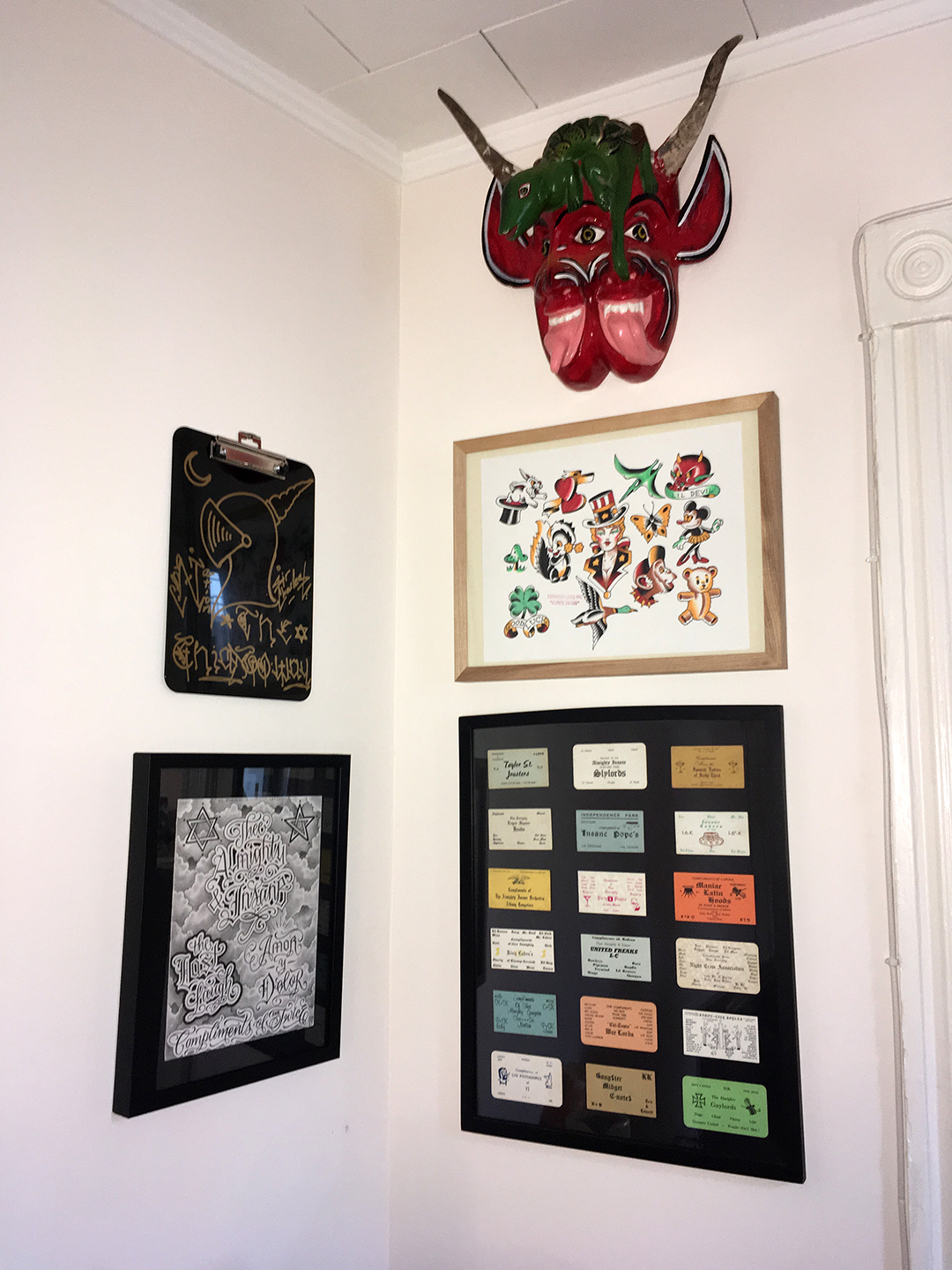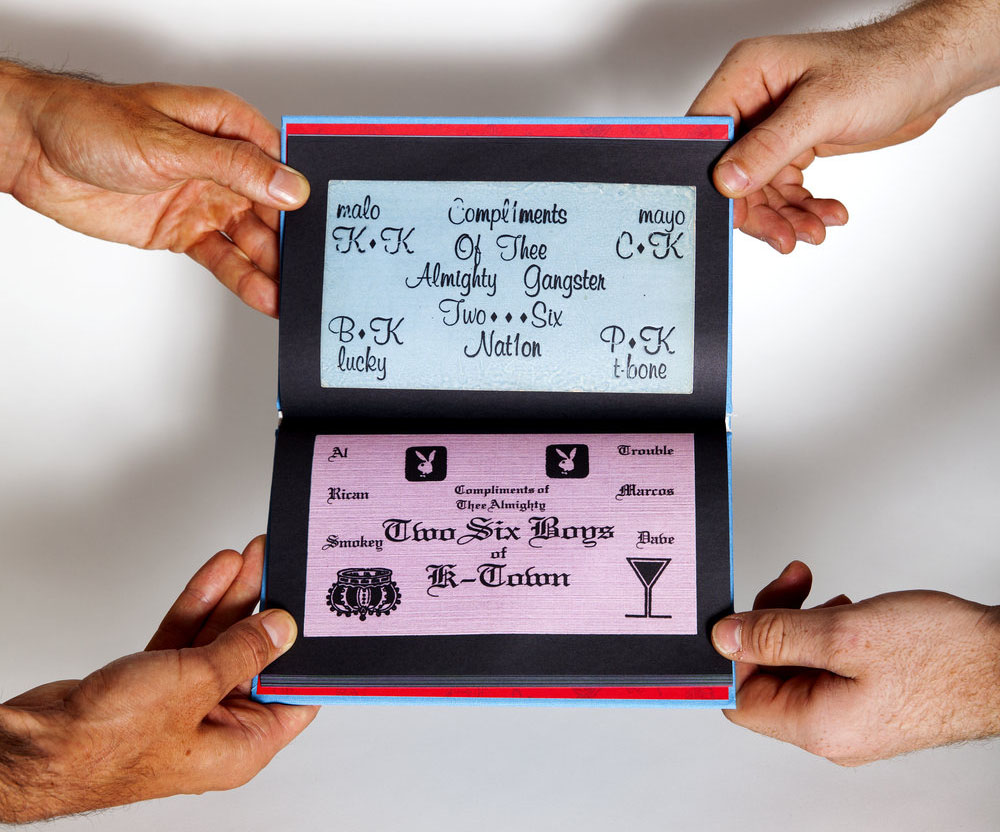
Photo by Levi Mandel
Brandon Johnson‘s latest project Thee Almighty & Insane: Chicago Gang Business Cards from the 1970s & 1980s hearkens back to a pre-digital era where gang members printed actual business cards with their symbols, nicknames, territories, and enemies as a way to network in gangland. The collection includes 60+ enlarged original and reprinted cards with an introductory essay by Johnson.
Sixtysix was able to ask Johnson about his creative process, how he gets his materials and what project he’s working on next.
How do you come up with project ideas?
I just try to work with what’s in front of me. Assess what opportunities are available, follow leads, and go from there. It’s easy to be of the mindset that there’s always something better around the corner, and a certain amount of research can expose you to new things. But it’s important not to disregard something you might consider common and therefore uninteresting because this isn’t necessarily true for everyone.
Context and presentation count for a lot in elevating any subject matter. For my recent book Thee Almighty & Insane: Chicago Gang Business Cards from the 1970s & 1980s, I had already been collecting the cards for the sake of collecting. While growing up in the Chicago area, I found a card that my Dad had in his possession from when he was younger. I followed my curiosity to learn more, eventually connecting with people who were selling them and ended up accumulating a decent amount of cards. Having worked in publishing for the past ten years the idea of a book came naturally.
My academic background is in history, and so I’m generally drawn to historical subjects. Working in the realm of visual art has led me to seek out cultural artifacts. These cards embodied a perfect combination of the aesthetic and historical. And obviously, the cards themselves are unique and geographically specific, which added to the appeal.

Thee Almighty & Insane by Brandon Johnson. Photo by Levi Mandel.
Have you received any feedback from gang members about Thee Almighty & Insane?
I’ve gotten some feedback. Fortunately, it’s all been positive. One good story is a woman who had bought a copy and ended up giving it to her friend’s next door neighbor in the Pilsen neighborhood of Chicago. He was a retired old school gang member and had heard on the street that a compliment card he created and printed back in the day had been published in a book. Lo and behold there it was. She gave him the book on the spot and he put it on display on his mantle. She sent me a photo. The book is turned to his card’s page and next to it is a figurine that symbolized his nickname “Joker”.
What project(s) are you working on currently?
Right now I’m looking into designing and publishing another book under the Almighty & Insane banner. I can’t disclose too much as it’s still in the early stages, but I can say the subject matter is also a collection of cultural artifacts from a related but different part of Chicago’s history. For me, the opportunity to publish books is a dream and the success of Thee Almighty & Insane has motivated me to continue on. I’ve always loved books. When I was a kid, I’d go to the local library frequently and wander the aisles finding a treasure trove of books on different subjects. I’m now realizing how much of an effect spending all that time in proximity of books has rubbed off on me. Working for a magazine has allowed me to look behind the curtain. Now it’s my turn to play the role of Oz
What’s your “day job”?
I am managing editor of zingmagazine, a New York-based contemporary art publication edited/published by the artist Devon Dikeou. This is where I got my publishing chops, along with learning the design side of things. I’m trained as a writer but working for a small organization has caused me to wear a lot of hats over the years. I published my first book Far From the Madding Crowd: Perspectives on the Life and Work of Dan Asher through zingmagazine.
Dan Asher was an artist who had been living and working in New York from the 1970s up to his death in 2010, publishing rock photos in Punk magazine in the ’70s, running with Jean-Michel Basquiat in the ’80s, sharing a studio with with Yoshitomo Nara in Cologne in the ’90s, and traveling around the world and making paintings, drawings, photos, and videos in between. This project involved interviewing around 40 individuals who knew Dan in various ways–art dealers, confidants, and even his dentist.

A collection of artwork in Brandon Johnson’s home studio.
What sorts of restrictions do you find in your work (budgetary, creative, etc.) How do you work through these problems?
Printing is not cheap and finding resources can be a challenge. Many independent publishers are inventive when it comes to methods of production that are affordable but effective. I was fortunate to have the support of zingmagazine in publishing the first edition of Thee Almighty & Insane, which allowed me to go a little more lux on the production options. But moving forward printing costs will be one of the biggest restrictions in publishing future titles.
As far as creative restrictions, I find that my lack of a formal background in design can often feel like an obstacle. I can have a vision but achieving it can be daunting. I’ve found the best way to deal with this is to just keep things simple and move forward as best I can while seeking information that might help whether through colleagues, books, or the internet. On the other hand, a restriction is often a source of creativity.
There was a French literary group called Oulipo founded in the 1960s who created works using constrained writing techniques. For example, Georges Perec‘s 1969 novel La Disparition is written without ever using the letter “e” – the most frequently used letter in the French language. It forced him to seek workarounds and the writing is much more interesting because of this. So I just try to identify the problems and work through them.
I’ve come to appreciate the process of design as a form of editing. In writing the first draft serves to get ideas on paper. Then you need to edit the text until you find the best articulation. Using this approach for design has helped me to understand it’s all in the process. Keep working until you get what you’re after. In my experience, as long as blockages can be clearly identified and regarded, there are usually solutions. Might not be what was originally envisioned, but the end result is usually, in fact, better than you could have originally imagined.

Brandon Johnson’s studio desk and workspace.

A selection of some of the cards Brandon Johnson used for Thee Almighty & Insane.



